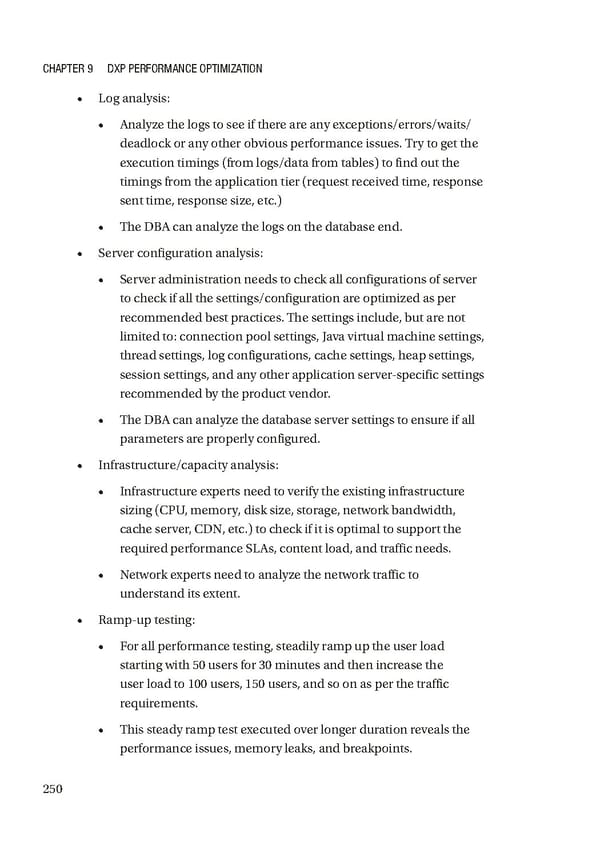CHAPTeR 9 DXP PeRfORMANCe OPTIMIzATION • Log analysis: • Analyze the logs to see if there are any exceptions/errors/waits/ deadlock or any other obvious performance issues. Try to get the execution timings (from logs/data from tables) to find out the timings from the application tier (request received time, response sent time, response size, etc.) • The DBA can analyze the logs on the database end. • Server configuration analysis: • Server administration needs to check all configurations of server to check if all the settings/configuration are optimized as per recommended best practices. The settings include, but are not limited to: connection pool settings, Java virtual machine settings, thread settings, log configurations, cache settings, heap settings, session settings, and any other application server-specific settings recommended by the product vendor. • The DBA can analyze the database server settings to ensure if all parameters are properly configured. • Infrastructure/capacity analysis: • Infrastructure experts need to verify the existing infrastructure sizing (CPU, memory, disk size, storage, network bandwidth, cache server, CDN, etc.) to check if it is optimal to support the required performance SLAs, content load, and traffic needs. • Network experts need to analyze the network traffic to understand its extent. • Ramp-up testing: • For all performance testing, steadily ramp up the user load starting with 50 users for 30 minutes and then increase the user load to 100 users, 150 users, and so on as per the traffic requirements. • This steady ramp test executed over longer duration reveals the performance issues, memory leaks, and breakpoints. 250
 Building Digital Experience Platforms Page 263 Page 265
Building Digital Experience Platforms Page 263 Page 265